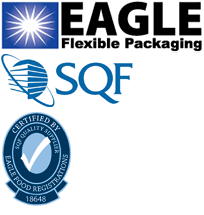Plastics and Sustainability in Pet Food Packaging
 Single-use plastics seem to get all the attention these days as consumers and corporations alike aim to reduce our impact on the environment and make more responsible, sustainable choices. Though much of the discussion revolves around water bottles, plastic straws, and other tableware, pet food packaging has increasingly migrated from paper to plastic materials. Is this a surprisingly—and perhaps regressive—trend that will come back to bite pet food packaging, or is it a step forward?
Single-use plastics seem to get all the attention these days as consumers and corporations alike aim to reduce our impact on the environment and make more responsible, sustainable choices. Though much of the discussion revolves around water bottles, plastic straws, and other tableware, pet food packaging has increasingly migrated from paper to plastic materials. Is this a surprisingly—and perhaps regressive—trend that will come back to bite pet food packaging, or is it a step forward?
Consumer Perception of Plastic Packaging
As of this year, the majority (roughly 8 out of 10) of consumers are at least somewhat aware of the impact of—and move away from—single-use plastics, and nearly 2/3 are concerned about the negative effects of plastic waste on our oceans. It’s not surprising, then, that more than half of pet food buyers show a preference toward packaging and products not containing plastic. Despite this preference, however, plastic flexible packaging continues to overtake paper in the industry.
Flexible packaging does a great job of protecting dry food products and keeping them fresh both because of the nature of the films making up the packaging and the benefits of zip and other resealable closures. But convenience doesn’t have to exclude sustainability, and in fact flexible packaging can be far more sustainable than traditional packaging types. For pet food and packaging manufacturers alike, it is important to carefully consider and implement sustainable practices, but it’s also just as important to communicate that information to consumers.
Sustainability in Pet Food Packaging
Plastic has long been a challenge because it can be difficult to make the material itself sustainable, but it can be even more of a struggle to get consumers to participate after use. But flexible packaging still offers many advantages and exciting innovations are moving toward even greater levels of sustainability.
Sure, even discarded flexible pouches take up much less space in landfills, but recyclable materials make it an even better choice. Upcycling initiatives by some pet food manufacturers also offer consumers the opportunity to return their emptied pouches for them to take on a second (or more) life. Compostable films take flexible packaging even further in the environmentally-friendly direction, giving back to the soil and significantly reducing waste.
Sustainability and carbon footprint aren’t limited just to the materials themselves, but also production and transportation. Flexible packaging is efficient to manufacture, can be printed with water-based inks, takes up less space in shipping (meaning more can be shipped in fewer loads, greatly reducing emissions) and requires less space to store. These additional factors combined with the materials themselves add up to a responsible packaging option that promises to continue to advance in reducing negative environmental impact.
Ready to explore sustainable solutions for your pet food products? Give us a call or contact us!

